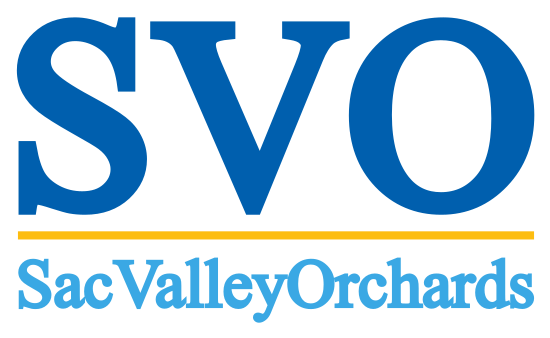Franz Niederholzer, UCCE Farm Advisor, Colusa and Sutter/Yuba Counties
Luke Milliron, UCCE Farm Advisor, Butte, Glenn and Tehama Counties
Becky Wheeler-Dykes, Tree Crop Researcher, CSU Chico
Please note that the following are general recommendations intended to help you keep track of regular practices in a busy time; the optimal timing for management practices may vary based on specific location and conditions.
- Manage post-harvest irrigation to minimize water stress. This is very important for orchard health going into winter. Cytospora canker grows faster in orchards under water stress. Your orchard could show it next year if you ignore or partially ignore your orchard irrigation this fall. Following harvest, water stress measured as stem water potential using a pressure chamber should be mild to moderate (-12 to -16 bars).
- Fall nutrition program. When making fall nutrient management decisions consider your July leaf sample results and crop load. If nitrogen levels in your July leaf sample were below the critical value, consider a fall foliar nitrogen spray, especially in young orchards where low nitrogen can predispose the trees to bacterial canker infection over a cold/wet winter. Soil applied nitrogen, especially after September, is vulnerable to leaching because of limited root activity. Soil applied potassium (K) should be banded in the fall. This practice is an inexpensive method of delivering needed potassium to the orchard for the following crop year. Alternative programs focus on applying potassium during the next growing season and may include fertigating more expensive liquid materials (KTS, liquid MOP, potassium carbonate, etc.), foliar applications of potassium nitrate or some combination of fertigation and foliar application.
- Orchard clean up and pruning. Plan for pruning to remove Cytospora cankers, cut out branches damaged during harvest, tame tree size and manage next year’s crop load. Again, to ensure all infected wood is cut from the tree, see photos of a “clean” pruning cut in the Pruner’s Pocket Guide for Cutting out Cytospora. Avoid pruning two weeks prior to a rain event. We strongly recommend protecting pruning wounds with a fungicide spray (e.g. Topsin-M® or Topsin-M + Rally®), especially if rain is in the forecast
- Fall/winter aphid control. Fall and winter preventative management for aphids can be an effective and ideal time to treat orchards with a history of problems, particularly if no dormant sprays will be applied for scale or peach twig borer. Fall aphid sprays are not effective for scale and don’t provide the same level of control as dormant timings for peach twig borer During the dormant period, a moderate rate of pyrethroid is effective on aphids and peach twig borer but keep water quality risks in mind when timing dormant pyrethroid applications. Adding oil to a dormant pyrethroid treatment can provide additional efficacy against scale populations. Oil, alone, will control small to moderate scale populations. (To avoid oil burn, don’t spray dry dormant trees with oil.) For additional detail, click HERE to see articles on prune aphid management.
- San Jose Scale. Once leaf fall begins, dormant spur samples can be used to scout for San Jose scale and European fruit lecanium, evidence of parasitism in both species, as well as aphid eggs and European red mite This information will help determine if a dormant spray program is needed and, if so, what’s in the spray tank
- Weed Management. Conduct a post-harvest weed survey to evaluate your 2020 weed control program. Pre-emergent herbicide should be applied shortly before a moderate rain event (0.25”) to move material into the soil. Avoid application prior to a large rain event (> 1”), which can move the product too deep into the soil for good weed control.
- Gophers. Late fall to early winter is prime gopher control timing because populations are generally lowest at this time of year.
Critical Nutrient Levels for Prune Leaves* Sampled in July
* Fully expanded leaves from non-bearing spurs sampled in July. Click HERE for sampling protocol details.


Leave a Reply